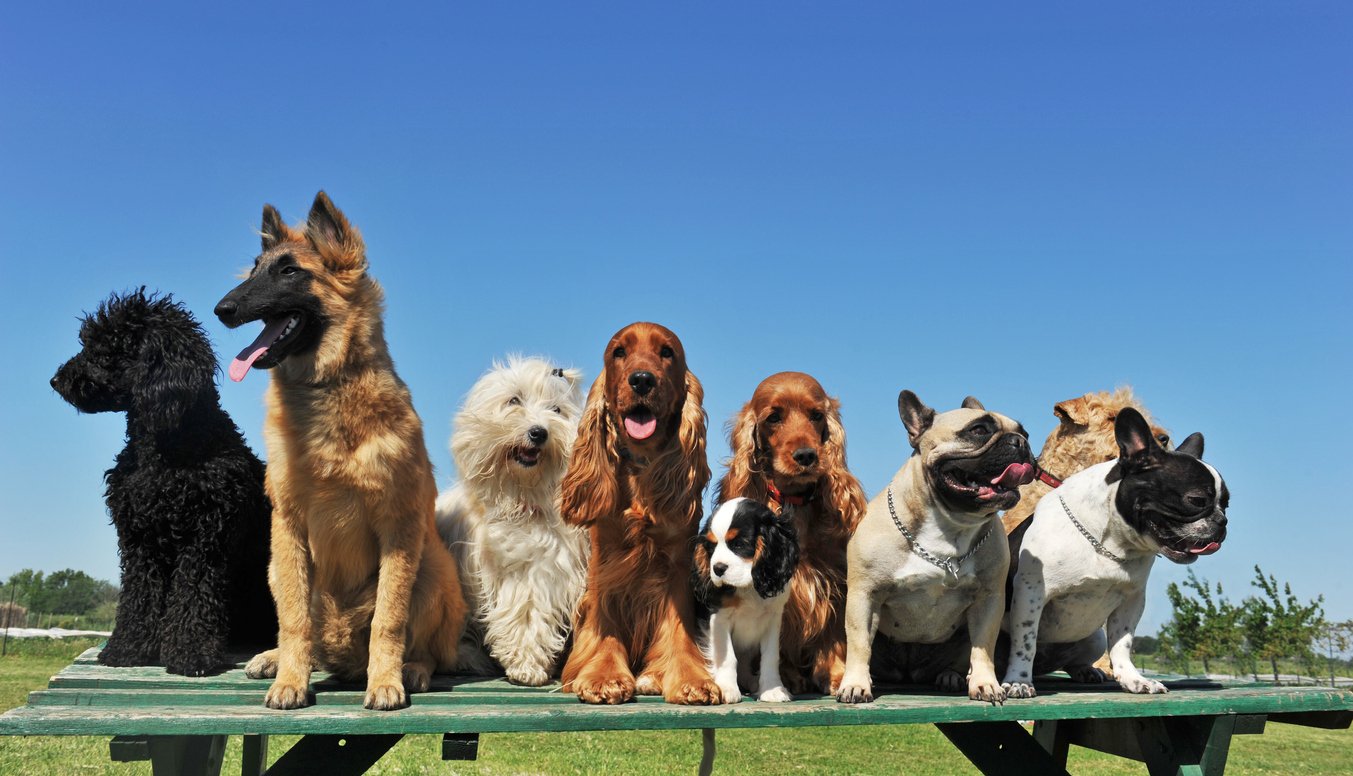How Pet-Care Facilities Can Keep Dogs, Cats, and Other Pets Safe in Extreme Heat
Heatwaves are hitting harder and more often — and it's not just your imagination. This summer, cities around the world are baking under record-breaking temperatures. The BBC reports that in Portugal, the town of Mora recently saw the temperature soar to a staggering 115.9°F/46.6°C, setting a new national record. Meanwhile, the UK faced one of its deadliest heatwaves in years, with hundreds of heat-related deaths reported in just a few days.
And it's not just Europe feeling the burn. In India, temperatures in parts of Rajasthan hit over 115°F as early as April, smashing seasonal norms. Across the United States, a similar brutal heat wave is bringing temperatures well over 100°F in states across the Midwest and Northeast for the first time in over a decade, according to the Associated Press.
For pet-care businesses — like dog daycares, catteries, kennels, and grooming salons — this kind of extreme weather isn't just uncomfortable; it can be dangerous for the animals in your care. Dogs, cats, and other pets can't cool themselves as efficiently as we can, and heat-related illnesses can come on fast.
As temperatures climb, pet-care providers face heightened responsibility to safeguard pets' health in their care.
Understanding how to mitigate the risks of high heat is essential to providing safe, compassionate, and high-quality care for dogs at daycares, catteries, kennels, and grooming salons. Let's look at practical strategies for protecting animals during heat waves.

Understanding Heat Stress in Animals
Before diving into practical tips, it's important to recognize the signs of heat stress and why animals are especially susceptible.
- Dogs and cats do not sweat like humans; they rely primarily on panting and limited sweat glands in their paws to regulate body temperature.
- Brachycephalic breeds (e.g., Bulldogs, Pugs, Persians) are particularly vulnerable due to their short nasal passages.
- Senior pets, young animals, obese pets, and those with heart or respiratory conditions are also at higher risk.
Common Symptoms of Heat Stress:
- Excessive panting or drooling
- Lethargy or weakness
- Vomiting or diarrhea
- Bright red or pale gums
- Collapse or seizures
The American Veterinary Medical Association (AVMA) warns that heatstroke can occur rapidly — in as little as 10-15 minutes of extreme exposure — and can be fatal if not treated immediately.
Facility Strategies for Managing Extreme Heat
Optimize Indoor Climate Control
Ensure your indoor environment is cool, comfortable, and well-ventilated.
- Air Conditioning: Make sure your HVAC system is fully operational and set to maintain a safe temperature (ideally 68–75°F / 20–24°C).
- Fans & Dehumidifiers: Use fans to promote airflow, especially in grooming or kennel areas. Dehumidifiers help when humidity is high, which can impair animals' cooling ability.
- Backup Power Source: Consider investing in a generator or backup battery to maintain climate control during power outages, which are a real risk during summer storms or utility strain.
Monitor and Record Temperature Zones
Use digital thermometers or smart sensors to track temperature and humidity in all parts of your facility, especially:
- Kennel runs and cat condos
- Grooming and bathing rooms
- Daycare play areas
- Vehicle interiors (see transport tips below)
Logging this data daily can help detect heat-risk zones and reassure clients about safety protocols.
Hydration and Nutrition
Offer Constant Access to Fresh Water
Hydration is critical. Place multiple bowls or fountains throughout the facility, and:
- Clean and refill bowls at least every 2–3 hours.
- Use ceramic or stainless steel bowls (they stay cooler than plastic).
- Add ice cubes to water bowls or offer frozen treats for enrichment.
For cats, consider running water fountains, which can encourage drinking — felines are notoriously prone to dehydration.
Adjust Feeding Schedules
During peak heat, animals may eat less. Consider feeding during cooler hours (early morning or evening), and:
- Avoid high exertion immediately after feeding, especially for large breeds.
- Offer light, hydrating snacks like dog-safe fruits (e.g., watermelon without seeds).
Grooming Tips During Heat Waves
Reevaluate Haircuts — Don't Shave!
Groomers, this one's for you! Contrary to popular belief, shaving a pet's coat can increase heat risk by removing natural insulation and exposing skin to sunburn.
- Double-coated breeds (e.g., Huskies, Golden Retrievers) should never be shaved down to the skin.
- Instead, opt for de-shedding treatments, light trims, and brush-outs to remove excess undercoat.
Use Caution with Dryers
Grooming dryers, especially cage dryers, can overheat quickly.
- Only dryers with temperature regulators and automatic shut-offs should be used.
- Never leave animals unattended while drying.
- Consider towel-drying or air-drying in cool areas during heat waves.

Safe Exercise and Play
Limit Outdoor Activity
During extreme heat, outdoor play should be brief and carefully timed.
- Restrict walks and play to early mornings or late evenings.
- Use booties or paw wax to protect against hot pavement — asphalt can reach 140°F (60°C) and burn paws in seconds.
- Create shaded outdoor areas with access to water misters or kiddie pools (always supervised).
Rotate Play Groups Indoors
If you operate a dog daycare that includes indoor play, rotate smaller groups of animals to maintain a cool, calm environment and prevent overheating from overexertion.
- Reduce rough play or high-energy activities during hot days.
- Provide enrichment activities like puzzle toys, lick mats, or scent games that stimulate the brain without physical stress.
Travel and Client Pickups
Transport With Climate Control Only
Never transport animals in vehicles without functioning air conditioning. Tips:
- Pre-cool the vehicle before loading the animals.
- Never leave pets unattended in a car — even with windows cracked, interior temperatures can exceed 120°F / 49°C in minutes.
If you offer pickup/drop-off services, alert clients about heat precautions and adjust timing if needed.
Emergency Preparedness
Train Staff on Heatstroke Protocols
Every team member should know how to recognize and respond to heat-related emergencies.
Keep this protocol for heatstroke First Aid handy in your facility:
- Move the animal to a shaded or air-conditioned area.
- Offer small amounts of cool (not ice-cold) water.
- Use wet towels or a lukewarm bath to reduce body temperature gradually.
- Call a veterinarian immediately — do not delay treatment.
Not only should you post emergency protocols in visible staff areas, but you should also review them regularly as you prepare for warmer seasons.
Communicate Clearly With Pet Parents
Transparency builds trust and promotes safety.
- Send weather updates via email or text to alert clients about adjusted routines.
- Remind parents not to walk pets to drop-off during peak heat.
- Share social media tips on summer pet safety.

Special Considerations by Facility Type
Dog Daycares
- Split large groups into smaller ones to reduce exertion.
- Use kiddie pools, shaded tents, and misting systems.
- Avoid high-intensity games like fetch during heat waves.
Catteries and Kennels
- Maintain low stress — cats often hide heat distress.
- Use cooling mats, frozen water bottles wrapped in towels, or fans.
- Provide vertical space away from direct sunlight.
Grooming Salons
- Schedule brachycephalic breeds in early morning slots.
- Use hypoallergenic wipes instead of full baths when possible.
- Prioritize shorter sessions to avoid overheating.

Long-Term Infrastructure Ideas
To future-proof your facility against recurring heat waves, consider making a few upgrades to your physical space, including:
- Installing UV-blocking window film or thermal blinds.
- Investing in solar-powered fans or ventilation systems.
- Exploring green roofing, which reduces internal temperatures.
- Using light-colored exterior paint to reflect heat.
Keep Pets Cool and Cared For
Heat waves are not just a summer nuisance but a serious health threat to animals in your care. By implementing proactive, science-backed strategies, your facility can prevent heat-related emergencies and demonstrate exceptional animal welfare standards.
Your commitment to safe, climate-resilient pet care protects pets and builds trust with clients who depend on your expertise. With the right systems, training, and communication, you can turn extreme weather into an opportunity to shine as a leader in responsible animal care. Revelation Pets has your back — try us free today!






